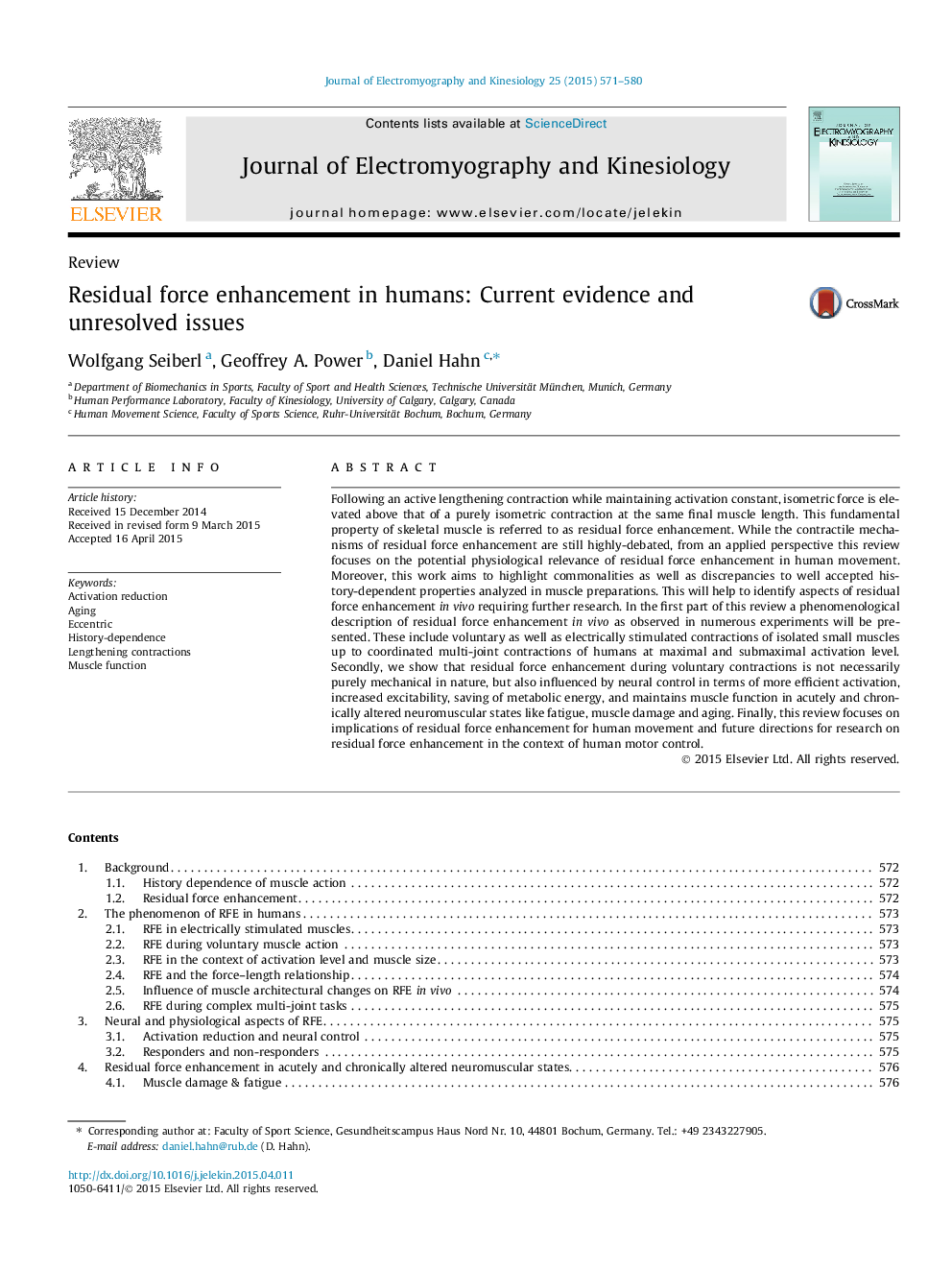| Article ID | Journal | Published Year | Pages | File Type |
|---|---|---|---|---|
| 4064581 | Journal of Electromyography and Kinesiology | 2015 | 10 Pages |
Following an active lengthening contraction while maintaining activation constant, isometric force is elevated above that of a purely isometric contraction at the same final muscle length. This fundamental property of skeletal muscle is referred to as residual force enhancement. While the contractile mechanisms of residual force enhancement are still highly-debated, from an applied perspective this review focuses on the potential physiological relevance of residual force enhancement in human movement. Moreover, this work aims to highlight commonalities as well as discrepancies to well accepted history-dependent properties analyzed in muscle preparations. This will help to identify aspects of residual force enhancement in vivo requiring further research. In the first part of this review a phenomenological description of residual force enhancement in vivo as observed in numerous experiments will be presented. These include voluntary as well as electrically stimulated contractions of isolated small muscles up to coordinated multi-joint contractions of humans at maximal and submaximal activation level. Secondly, we show that residual force enhancement during voluntary contractions is not necessarily purely mechanical in nature, but also influenced by neural control in terms of more efficient activation, increased excitability, saving of metabolic energy, and maintains muscle function in acutely and chronically altered neuromuscular states like fatigue, muscle damage and aging. Finally, this review focuses on implications of residual force enhancement for human movement and future directions for research on residual force enhancement in the context of human motor control.
